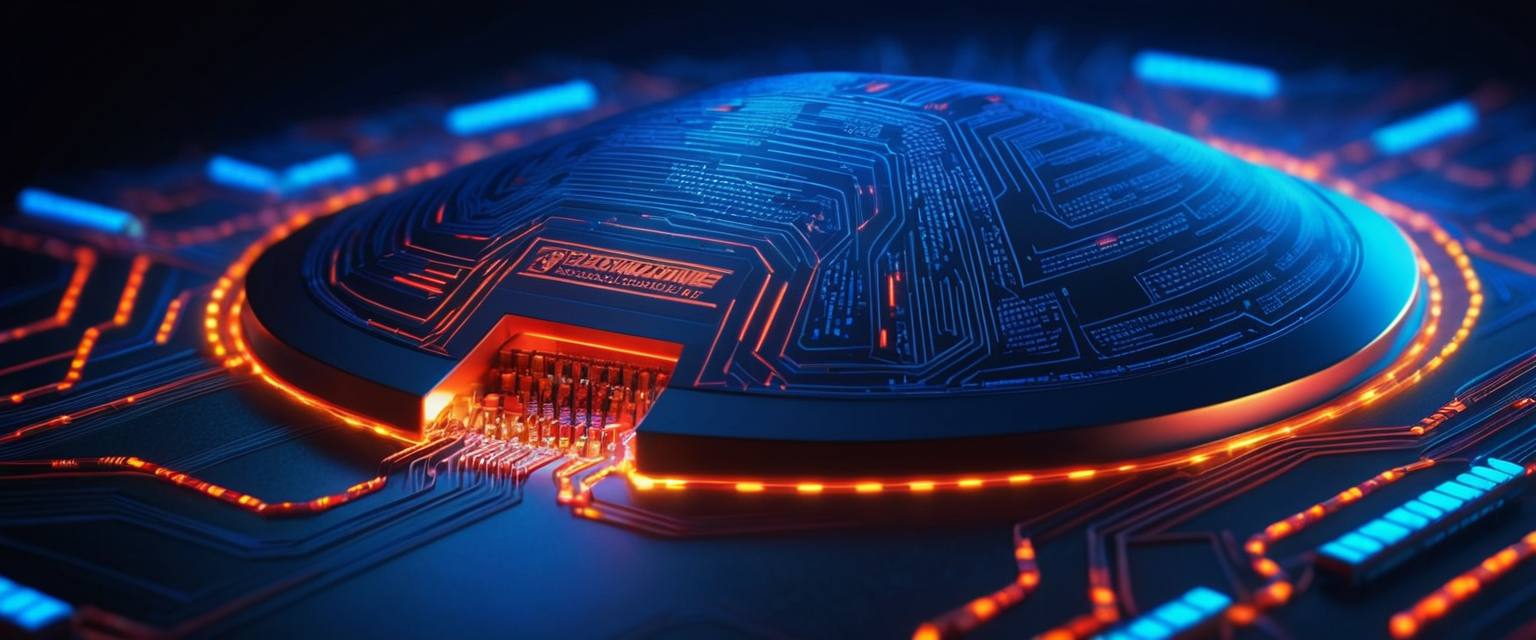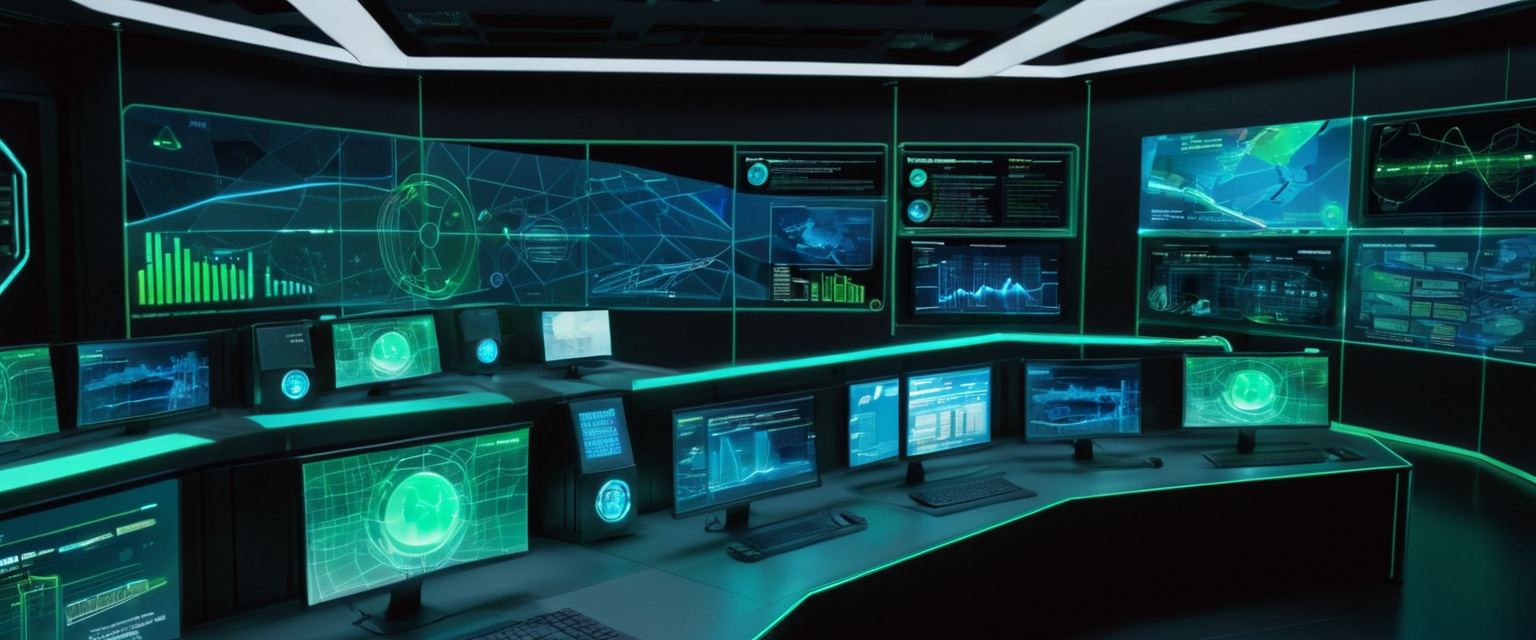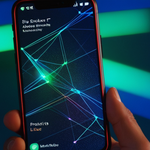
Ransomware has evolved from a nuisance affecting individual computer users into a sophisticated, systemic threat targeting critical infrastructure, essential services, and organizations across all sectors and sizes. In 2025, ransomware represents one of the most pressing cybersecurity challenges facing the global economy, with attacks against critical infrastructure sectors surging 34% year-over-year and affecting manufacturing, healthcare, energy, transportation, and finance industries. The financial impact has become staggering, with global ransomware damage costs projected to reach $57 billion annually—equating to $156 million per day or $2,400 per second. Understanding how to effectively combat ransomware requires a multifaceted approach that combines technical defenses, human awareness, robust recovery capabilities, and organizational resilience. This comprehensive analysis examines the complete spectrum of ransomware defense, from fundamental prevention principles through advanced detection technologies, incident response protocols, and recovery strategies that empower organizations to not merely survive a ransomware attack, but to thrive despite evolving threats.
The Evolution and Nature of Modern Ransomware Threats
Ransomware has fundamentally transformed from simple encryption-based extortion into a complex criminal enterprise with multiple extortion vectors and sophisticated business models. Traditionally, ransomware attacks involved cybercriminals deploying malicious software that encrypted critical files and demanded payment for decryption keys. However, the threat landscape has evolved dramatically. Double extortion attacks now combine file encryption with data theft, allowing attackers to threaten public release of sensitive information if ransom demands are not met. Triple extortion goes even further by adding distributed denial-of-service attacks or threatening third parties whose data was compromised, creating multiple pressure points to force payment. This evolution reflects the professionalization of the ransomware industry, particularly through the emergence of Ransomware-as-a-Service (RaaS) models that have democratized attack capabilities.
The RaaS ecosystem operates similar to legitimate software businesses, with developers creating and maintaining malware while recruiting affiliates who handle deployment against targets. Revenue-sharing arrangements provide affiliates with a percentage of ransom payments, creating strong financial incentives for skilled attackers while lowering technical barriers to entry. This business model has proven devastatingly effective because it separates specialized criminal functions—some groups focus on initial access, others on malware development, and still others on negotiation and payment collection. Recent data indicates that just five ransomware groups, including Qilin, Clop, Akira, Play, and SafePay, were responsible for nearly 25% of all incidents globally. These organizations have become increasingly sophisticated in their targeting strategies. Rather than conducting indiscriminate attacks, modern ransomware operators conduct extensive reconnaissance, targeting high-value organizations and critical infrastructure where the likelihood of substantial ransom payments is highest. The concentration of attacks reflects a deliberate strategy: organizations in the United States account for roughly 21% of global ransomware incidents, reflecting attackers’ focus on wealthy, digitally mature markets where ransom demands are most profitable.
The scale of modern ransomware has also expanded dramatically. Between January and September 2025, 4,701 ransomware incidents were recorded globally, up from 3,219 during the same period in 2024, representing a 46% increase. Of these 2025 incidents, 2,332 attacks—or 50%—targeted critical infrastructure sectors. The manufacturing sector experienced particularly sharp growth, with attacks surging 61% compared with the previous year, including high-profile incidents like Jaguar Land Rover’s global shutdown and Bridgestone’s production disruptions. These attacks underscore how ransomware actors increasingly view critical infrastructure not merely as data targets, but as leverage points for extortion, knowing that even short shutdowns can ripple through entire industries and economies.
Foundational Prevention Through Cyber Hygiene and Access Control
Effective ransomware defense begins with strong foundational practices that reduce the attack surface and minimize the likelihood of successful initial compromise. These preventative measures form the essential baseline that all organizations must implement before deploying advanced technical controls. The foundational approach combines vulnerability management, access control, and user behavior practices that collectively reduce exploitable weaknesses.
Patch Management and Vulnerability Remediation
One of the most critical and consistently effective defensive measures involves rigorous patch management. Ransomware frequently exploits known vulnerabilities in unpatched systems and software, and cybercriminals maintain detailed databases of exploitable weaknesses. By promptly applying security patches, organizations can close security gaps before malicious actors identify and exploit them. The process requires systematic vulnerability identification, prioritization based on severity and exploitability, testing in controlled environments to ensure patches do not introduce compatibility issues, and careful deployment across the organization. This disciplined approach is essential because while every unpatched vulnerability represents an entry point for ransomware, not all vulnerabilities pose equal risk. One-third of all data breaches are caused by unpatched vulnerabilities, demonstrating the direct relationship between patch management and breach prevention.
The challenge organizations face is establishing a practical patching cadence that balances security with operational stability. Critical patches addressing severe security vulnerabilities should be applied as soon as they are released, particularly for internet-facing systems. Organizations should establish a regular patching schedule—weekly, monthly, or as needed based on security alerts—to keep all systems current. Automated patch management tools can significantly enhance this process by streamlining identification, testing, and deployment across networks, reducing the risk of human error while ensuring consistent protection. For smaller organizations with limited IT resources, prioritizing critical patches and leveraging cloud-based solutions for remote patch management provides cost-effective protection.
Multi-Factor Authentication and Identity Protection
Identity protection represents a critical defensive layer because ransomware attacks often begin when threat actors access legitimate user accounts or network services, using valid credentials to gain initial access. Multi-factor authentication (MFA) requires users to provide multiple authentication credentials during login attempts, forcing attackers to bypass multiple checkpoints to gain access. The three primary MFA methods—knowledge-based (passwords, PINs, security questions), possession-based (one-time passwords via SMS or email, physical tokens), and inherence-based (biometric identifiers like fingerprints or facial recognition)—each provide different security characteristics that make compromised credentials alone insufficient for unauthorized access.
MFA should be mandatory for all administrative accounts and remote access points, as these represent high-value targets for threat actors. Conditional access policies applied via identity providers like Microsoft Entra ID can further restrict access based on user location, device health, and behavioral indicators, providing granular control over who can access what resources and when. Organizations that implement comprehensive MFA experience substantially reduced account compromise rates compared to those relying on passwords alone, making this control one of the highest-value defensive investments.
Privileged Access Management and Least Privilege
Privileged accounts represent prime targets for ransomware actors because they provide elevated access to critical systems and sensitive data. When threat actors compromise an account with administrative privileges, they gain the ability to modify security settings, disable antivirus software, create additional privileged accounts for persistence, delete system logs to cover their tracks, and execute exploit code to install ransomware or exfiltrate data. Conversely, restricting local administrator privileges significantly reduces the severity of attacks because many ransomware types rely on administrator rights to bypass security settings and spread through networks.
The principle of least privilege requires that users receive only the minimum access rights necessary to perform their job functions. This approach creates multiple benefits beyond ransomware defense: it reduces insider threat risks, limits the blast radius when any account is compromised, and makes anomalous activity more detectable because legitimate users operate within narrowly defined permission boundaries. Organizations can implement least privilege through role-based access control systems that automatically assign permissions based on job titles, just-in-time access that grants elevated privileges temporarily for specific tasks with automatic revocation afterward, and privileged access management platforms that monitor and control privileged account usage.
One concerning statistic illuminates the importance of privilege management: 93% of ransomware incident response engagements revealed insufficient controls on privilege access and lateral movement, indicating that many organizations have not adequately restricted elevated access despite years of security guidance. Additionally, 80% of data breaches involved misuse of privileged account access, demonstrating that credential compromise remains a fundamental attack vector.
Network Segmentation and Zero Trust Architecture
Network segmentation involves dividing an organization’s network into smaller, isolated zones or segments to prevent lateral movement by ransomware and other malware. By implementing virtual local area networks (VLANs), physical network divisions, or software-defined networking approaches, organizations can ensure that compromised systems cannot easily spread ransomware to critical assets. This containment strategy reduces the blast radius of attacks because ransomware deployed on a compromised user endpoint cannot automatically reach production databases, file servers, or critical applications unless the attacker explicitly moves laterally through the network.
Zero Trust architecture represents an evolution of network segmentation by implementing the principle that no user, device, or application should be inherently trusted simply because they are inside the network perimeter. Zero Trust requires continuous authentication and authorization for all access, verification that devices meet security standards before access is granted, and micro-segmentation that restricts access to specific resources rather than granting broad network access. In manufacturing environments and other operational technology settings where network segmentation poses unique challenges due to critical process dependencies, zero trust implementations must carefully balance security requirements with operational continuity.
Organizations implementing zero trust with network segmentation can significantly disrupt ransomware lateral movement because even compromised accounts cannot automatically access all network resources without additional authentication and authorization checks. This approach essentially converts a network breach into a contained incident rather than an organization-wide disaster.
Advanced Technical Defenses and Detection Systems
Beyond foundational cyber hygiene, modern ransomware defense requires sophisticated technical controls that detect attacks in progress and respond automatically to contain threats before encryption spreads across systems.
Endpoint Detection and Response and Extended Detection and Response
Endpoint Detection and Response (EDR) represents a fundamental modernization from traditional antivirus approaches by providing real-time monitoring of endpoint processes and behavioral detection rather than relying solely on known malware signatures. EDR systems continuously collect and analyze data on events like process creation, registry changes, network connections, and file modifications, leveraging behavioral analysis to identify suspicious activity patterns indicative of ransomware attacks. Instead of matching only known malware signatures, EDR analyzes behavior to spot signs of attacks such as rapid file encryption, unexpected encryption library calls, or abnormal file input/output patterns.
The core functions of effective EDR systems include monitoring and collecting endpoint data from all protected devices, analyzing and detecting suspicious activity using threat intelligence and behavioral analysis, automating response by isolating compromised endpoints to prevent spread, and providing forensic investigation tools to understand attack scope and attribution. When EDR detects credible ransomware indicators, it can automatically execute predefined response actions such as killing malicious processes, isolating the infected endpoint from the network, and quarantining suspicious files.
Extended Detection and Response (XDR) expands EDR capabilities by integrating endpoint data with network, email, and cloud telemetry to provide a holistic view of attack activity across an organization’s entire security infrastructure. This integrated approach enables faster, more accurate threat detection and response because analysts can correlate indicators from multiple sources and understand complete attack chains rather than isolated suspicious events. For example, XDR can correlate suspicious email attachment behavior with endpoint execution events and network traffic to confidently identify and contain ransomware attacks before file encryption begins.
Immutable Backups and Air-Gapped Storage
Immutable backup technology represents perhaps the most powerful ransomware defense because it ensures that recovery data cannot be altered, encrypted, or deleted regardless of how thoroughly an attacker compromises network infrastructure. Once data is written to immutable storage with enforced retention policies, it becomes locked for a defined retention period, making restoration possible even when ransomware has destroyed all mutable copies. This capability fundamentally undermines the attacker’s business model because victims can restore systems without paying ransoms, eliminating the financial incentive for the attack.
Modern immutable backup implementations employ several technical approaches to ensure data protection. Air-gapped storage physically separates backup systems from production networks so ransomware cannot reach them, either through offline backup copies stored on disconnected media or through geographically separated cloud storage. Chain-free backup technology makes each backup a complete, independent snapshot rather than relying on fragile chains where each backup depends on previous backups. This architecture means that if one backup is somehow compromised, all others remain intact and usable for restoration. WORM (Write Once, Read Many) technology and S3 Object Lock in cloud environments provide technical enforcement that prevents modification or deletion within the retention period, even by users with elevated privileges or by the backup system itself.
Organizations should retain backups for sufficient periods to cover delayed threat detection, typically 30 to 90 days depending on security maturity and cyber insurance requirements, while avoiding excessive retention that increases storage costs and legal risk. Time-based retention policies that automatically expire backups after defined periods minimize manual intervention and ensure consistency with recovery time objectives (RTO) and recovery point objectives (RPO). Regular restoration exercises verify that backups function correctly and contain clean, malware-free data suitable for recovery.
Email Security and Content Filtering
Email remains the most common initial attack vector for ransomware delivery, with attackers using phishing emails containing malicious attachments or links to compromise user accounts. Sophisticated email security solutions employ multi-layered detection mechanisms including URL filtering that blocks access to malicious websites, content sandboxing that opens attachments in virtualized environments to detect malware before users access them, and social engineering detection that identifies suspicious emails impersonating known contacts or organizations. These solutions scan emails for suspicious links and block access until target sites are verified as safe.
Email filtering should specifically address common attack tactics including disabling macros by default in Microsoft Office documents to prevent malware execution, blocking executable attachments that commonly deliver ransomware, and filtering based on sender reputation and domain authentication (SPF, DKIM, DMARC) to detect spoofed emails impersonating trusted senders. Macros present particular risk because threat actors commonly embed ransomware payloads in Microsoft Office files that execute when users enable macros, typically after being social engineered into believing the document is legitimate. Disabling macros by default and requiring administrative action to enable them significantly reduces this attack vector.

Early Detection, Incident Response, and Containment
Despite comprehensive prevention efforts, some ransomware attacks will inevitably penetrate organizational defenses. When this occurs, speed of detection and containment becomes critical because rapid response dramatically limits the scope of encryption and the extent of data loss.
Indicators of Compromise and Threat Hunting
Indicators of Compromise (IOCs) represent digital forensic evidence suggesting that a breach has occurred, including suspicious network traffic, unusual file modifications, unexpected privileged account activity, and other anomalies. Organizations that actively monitor for IOCs can often detect ransomware attacks while lateral movement is occurring but before widespread encryption begins. Common IOCs for ransomware include unusual inbound and outbound network traffic, geographic irregularities such as login attempts from countries where the organization lacks operations, unauthorized applications within systems, unusual activity from privileged accounts, upticks in failed login attempts suggesting brute force attacks, anomalous database read volumes, and large numbers of requests for specific files.
Security Information and Event Management (SIEM) systems aggregate security logs from across an organization and apply detection rules to identify patterns consistent with ransomware attacks. Real-time SIEM alerts on suspicious behaviors including rapid file encryption patterns, unexpected encryption library calls, mass file deletion attempts, registry modifications associated with disabling security software, and unusual process execution chains enable rapid incident response. Threat hunting—the proactive process of searching for evidence of compromise in systems and logs—complements automated detection by allowing experienced analysts to identify sophisticated threats that may evade automated rules.
Rapid Containment and Isolation
Once ransomware is detected, immediate isolation of affected systems from the network becomes the first priority containment measure. The rationale is straightforward: ransomware spreading to additional systems and storage devices multiplies damage and increases recovery complexity. If a single compromised endpoint is detected, IT teams should immediately unplug the network cable, disable Wi-Fi and Bluetooth, and remove all external storage devices connected to the system to prevent ransomware from reaching other assets. If the attack’s scope is unclear or has already spread beyond an individual endpoint, more aggressive containment may be necessary, including taking critical network infrastructure offline such as Wi-Fi routers, switches, and internet connectivity to prevent further spread, though this dramatic action should only be taken when the infection scope is unknown and potentially widespread.
System power management during containment requires careful consideration because powering off equipment may remove evidence held in volatile memory that forensic analysis teams need to understand the attack. Putting systems in sleep mode or hibernate mode preserves volatile memory while preventing execution of ransomware processes, balancing evidence preservation with containment objectives. Once systems are isolated, all accounts involved in the attack should be immediately blocked or deactivated, including through removal of Active Directory permissions or revocation of cloud service access. Passwords and other authentication credentials for administrator and service accounts should be reset, and multi-factor authentication should be verified to ensure attackers have not disabled it to maintain access.
Incident Response Planning and Tabletop Exercises
Effective incident response to ransomware requires detailed planning completed before an attack occurs rather than attempting to develop procedures during the crisis. Incident response plans should identify team members and assign specific roles including incident manager, security analysts, communications officer, and business continuity coordinators, with clear responsibilities defined in advance. The plan should include detailed procedures for identification and isolation of affected systems, communication protocols that outline who communicates with whom and when, escalation paths for executive decision-making, and recovery procedures specific to critical business applications.
Ransomware tabletop exercises provide invaluable preparation by simulating realistic attack scenarios in a controlled, risk-free environment where participants practice incident response without pressure or time constraints. These exercises typically involve facilitators moderating discussions where participants from multiple departments imagine that a ransomware attack has occurred at their organization and determine appropriate response actions. Evaluators observe and take notes to identify gaps, communicate unclear procedures, and reveal coordination challenges that may surface during actual incidents. Regular exercises—ideally quarterly—maintain team familiarity with procedures and help organizations adapt responses to evolving threat tactics.
Recovery, Restoration, and Business Continuity
Once ransomware has been contained, the focus shifts to recovery and restoration of systems and data to resume normal business operations. This phase often represents the difference between a managed incident and a catastrophic business disruption.
Data Validation and Malware Scanning
After isolating ransomware-infected systems, organizations face a critical decision: restore from backups or attempt decryption using available tools. Before initiating restoration, all backup data must be scanned for malware to prevent restoring infected copies that could re-infect cleaned systems. This validation process involves running comprehensive antimalware scans against backup data and comparing file hashes or data integrity metrics against known clean states to identify corrupted or potentially malicious backups.
Organizations should regularly consult the No More Ransom Project, which maintains a repository of decryption keys and tools for numerous ransomware variants. If a decryption tool is available for the specific ransomware variant, this can be a valuable recovery avenue, though using decryption tools requires technical expertise and is not guaranteed to recover 100% of encrypted data. In many cases, however, restoration from verified clean backups remains faster and more reliable than attempting decryption.
System Restoration and Parallel Recovery
For major ransomware attacks where Active Directory or other central authentication systems may have been compromised, organizations should consider building a parallel recovery environment rather than restoring into the existing infrastructure, preventing potential re-infection from remaining malware or attacker persistence mechanisms. This parallel approach involves constructing new systems, applications, and security configurations in an isolated environment, verifying their functionality, and then carefully reconnecting them to the recovered production network only after confirming cleanliness.
When parallel recovery is not feasible due to time or resource constraints, organizations must take additional precautions including thoroughly removing all identified malicious binaries before reconnecting systems to the network, systematically applying security patches and hardened configurations, and deploying endpoint detection and response to monitor for signs of re-infection. Never reconnect systems that were previously connected to the infected environment without thoroughly verifying they are clean, as failure to do so risks reinstalling the same ransomware that required containment and recovery in the first place.
Recovery Time and Business Continuity Planning
The Mean Time to Recover (MTTR) becomes a critical metric measuring how quickly systems return to operational status after an attack. Organizations should establish MTTR targets aligned with business continuity goals that define acceptable downtime for different application categories. Recovery Time Objectives (RTO) specify how long it is acceptable for critical systems to be offline before business operations suffer unacceptable impact, while Recovery Point Objectives (RPO) define acceptable data loss in terms of how recently backed-up data must be to avoid unacceptable business disruption. For mission-critical systems in healthcare, finance, or infrastructure, RTO might be measured in hours while RPO might target 24 hours or less.
Achieving aggressive RTO and RPO targets requires substantial preparation including maintaining detailed documentation of critical systems, configurations, and recovery procedures; regularly testing backup restoration to ensure backups are functional and data is recoverable; and maintaining off-site copies of critical documents required for recovery such as configuration management databases, network diagrams, and disaster recovery procedures. These supporting documents themselves represent attractive targets for ransomware actors who deliberately attempt to destroy or encrypt them to slow recovery, so they must be protected with the same rigor as operational backups.
Human Factors, Organizational Preparedness, and Security Awareness
Technical controls cannot alone prevent ransomware attacks because the human element remains a critical vulnerability that sophisticated threat actors actively exploit through social engineering, phishing, and psychological manipulation.
Security Awareness Training and Phishing Simulations
Employees represent the first and often last line of defense against ransomware because initial compromise typically involves tricking someone into clicking a malicious link, opening an infected attachment, or revealing credentials. Comprehensive security awareness training should educate employees about ransomware threats and the attack methods commonly used to compromise systems, including phishing emails with malicious attachments, unsolicited web links leading to malware, and social engineering tactics that exploit urgency or authority to pressure hasty decisions.
The most effective training approaches move beyond fear-based messaging and one-time awareness sessions to instead build lasting behavioral change through repeated exposure, realistic scenarios, and immediate feedback. Phishing simulations involve sending realistic but harmless phishing emails to employees to test whether they can identify suspicious messages and report them rather than clicking links or opening attachments. When employees click on simulated phishing links, they immediately receive educational feedback explaining what they missed and how to avoid falling for similar attacks in the future, converting mistakes into learning opportunities. Quarterly or more frequent phishing simulations maintain employee awareness and demonstrate steady improvement in click rates as training takes effect.
Role-specific training enhances effectiveness by addressing the particular risks different employee categories face. System administrators and IT staff require deeper technical training on security hardening, privilege management, and incident response procedures, while finance department employees benefit from training on invoice fraud and business email compromise attacks that specifically target them. Executives and business leaders need training that emphasizes their role in supporting security culture and the risks of ransomware to organizational resilience rather than technical attack methods they are unlikely to encounter.

Establishing Security Culture and Incident Reporting
Organizations where employees feel comfortable reporting suspicious activity to IT departments without fear of punishment enjoy substantially better security outcomes because threats are identified and contained earlier. This requires fostering a security culture where cybersecurity is recognized as everyone’s responsibility and where reporting suspicious activity is encouraged and rewarded rather than punished. When an informed employee identifies a phishing email or suspicious system behavior and immediately reports it, the potential for contained incidents rather than organization-wide compromise increases dramatically.
Communication and transparency during security incidents build trust and reinforce the importance of rapid reporting. When employees understand that IT departments respond quickly and professionally to reported threats, they are more likely to report future suspicious activity rather than dismissing concerns. Conversely, organizations that publicly criticize or blame employees who fell victim to phishing attacks create cultures where incidents go unreported, malware spreads unchecked, and ransomware encryption occurs before detection.
Financial, Legal, and Ethical Considerations Surrounding Ransom Payment
Organizations facing active ransomware attacks often confront a critical decision: pay the demanded ransom or attempt recovery through other means. This decision involves complex financial, legal, and ethical considerations.
Why Paying Ransoms Is Counterproductive
The FBI explicitly advises against paying ransoms, stating “The United States Government does not encourage paying a ransom to criminal actors” and emphasizing that doing so comes with “serious risks.” Multiple factors make ransom payment counterproductive despite surface-level appeal. First, paying the ransom does not guarantee recovery of data or systems—the FBI and incident response firms report numerous cases where organizations paid demanded ransoms but never received decryption keys, never received complete decryption keys, or received keys that only partially decrypted data. One FBI investigation found that “some victims were asked to pay more to get the promised decryption key” after paying the initial ransom, demonstrating that attackers may simply increase demands after confirming victims will pay. In fact, researchers at Proofpoint found that one in three victims who paid ransom were forced to pay additional extortion before receiving their decryption key.
Second, paying ransoms funds criminal enterprises and encourages additional attacks. When organizations pay ransom demands, threat actors gain financial rewards that validate their business model and provide capital to develop more sophisticated malware, recruit additional affiliates, and target more organizations. Each ransom payment represents a vote of confidence in the ransomware business model that encourages competitors to enter the market and existing groups to expand operations.
Third, paying ransom to certain entities may violate sanctions laws. The U.S. Treasury’s Office of Foreign Assets Control (OFAC) has issued guidance that paying ransom to sanctioned entities can result in legal penalties, even when payment is made under duress. This is particularly concerning because many sophisticated ransomware groups have connections to nation-states or operate from jurisdictions on government sanctions lists. Organizations that pay ransom could face substantial legal liability in addition to ransom amounts.
Regulatory Reporting Requirements
Increasingly, governments mandate reporting of ransomware incidents and ransom payments. The Cyber Incident Reporting for Critical Infrastructure Act (CIRCIA) requires covered entities in 16 critical infrastructure sectors to report substantial cyber incidents to CISA within 72 hours and report ransom payments within 30 days. This mandatory reporting obligation applies to entities in critical infrastructure including financial services, information technology, energy, healthcare, food and agriculture, critical manufacturing, chemicals, communications, defense industrial base, and emergency services.
The rationale for reporting requirements is that information sharing about ransomware threats, attacker tactics, and infrastructure compromises strengthens national cyber resilience by enabling coordinated defense and law enforcement response. However, reporting requirements also create complexity for organizations that must balance incident response with legal compliance and government coordination. Organizations in critical infrastructure sectors should establish relationships with FBI field offices and U.S. Secret Service (USSS) who can provide real-time support during active incidents and coordinate law enforcement response.
Cyber Insurance and Claims Considerations
Cyber insurance increasingly covers ransomware including ransom payment amounts, business interruption losses, and incident response costs, recognizing ransomware as a significant threat to business continuity. Many cyber insurance policies include expert negotiators who can reduce ransom demands—in one documented case, Coalition negotiated a demand down from $750,000 to $200,000, a nearly 75% reduction that demonstrates the value of expert resources. Insurance policies typically cover business interruption losses during recovery, costs for digital forensics investigation, public relations and reputation management services, legal costs for navigating regulatory requirements, and in some cases the ransom payment itself.
However, cyber insurance policies include significant exclusions that can leave organizations uninsured when they most need coverage. Insurers may deny claims if they determine organizations lacked basic security controls like multi-factor authentication, endpoint protection, or effective security awareness training. Pre-existing vulnerabilities that organizations failed to patch may result in claim denial. Insider threats may not be covered under standard policies. These exclusions underscore why strong foundational security controls are not just defensive necessities but also insurance requirements for maintaining adequate coverage.
Emerging Threats and Future Ransomware Trends
The ransomware threat continues evolving in sophistication and scope, with emerging trends suggesting that defenses must continuously adapt to maintain effectiveness.
Living-off-the-Land and Defense Evasion Tactics
Modern ransomware groups increasingly use legitimate system tools and administrative utilities to avoid detection by security solutions, an approach called “living-off-the-land” because attackers leverage tools and functionality already present on systems. For example, threat actors may use Windows Quick Assist, legitimate remote access tools, PowerShell scripts, or other built-in administrative utilities to conduct attacks without deploying detectable malware. This approach makes malicious activity difficult to distinguish from normal operations because attackers blend in with legitimate administrative activity.
Additionally, sophisticated groups employ Bring Your Own Vulnerable Driver (BYOVD) tactics that load legitimately signed but vulnerable drivers to disable security controls from within the system. These evasion tactics require security solutions that understand attack behavior rather than simply detecting malicious binaries, because the tools and drivers themselves are legitimate. Effective detection of living-off-the-land attacks requires behavioral analysis, threat intelligence on known attacker TTPs, and anomaly detection that flags unusual activity patterns even when legitimate tools are being misused.
Supply Chain and Third-Party Attacks
Threat actors increasingly recognize that compromising trusted software vendors and managed service providers provides access to numerous downstream customers simultaneously. The 2024 MOVEit breach exemplifies this strategy: a critical vulnerability in Progress Software’s MOVEit Transfer product was exploited by the Cl0p ransomware group, impacting more than 2,700 organizations worldwide and exposing data from over 93 million individuals. Supply chain attacks are particularly damaging because organizations trust their vendors and may not immediately recognize that compromise occurred through trusted channels.
Defending against supply chain ransomware requires organizations to implement threat-informed third-party risk management (TPRM) that goes beyond compliance questionnaires to include continuous monitoring of vendor security postures, correlation of threat intelligence with vendor exposures, and prioritization of vendors based on exposure to active threat activity. Organizations must understand not just whether vendors meet baseline security requirements, but which threat groups are actively targeting vendors in their supply chain and what vulnerabilities or exposures those vendors face. This intelligence-driven approach enables proactive risk reduction rather than reactive response to breaches discovered after compromise.
Targeting AI Systems and Cloud Infrastructure
As artificial intelligence systems become more central to business operations, ransomware actors are beginning to target AI platforms and machine learning infrastructure as lucrative targets. Additionally, ransomware groups have demonstrated capability to target cloud management infrastructure by compromising AWS keys and accessing cloud control planes rather than just traditional data plane resources. These emerging threat vectors suggest that cloud security, identity and access management in cloud environments, and AI system resilience will become increasingly important defensive priorities.
Your Ongoing Ransomware Battle Plan
Combating ransomware effectively requires moving beyond single point solutions or defensive layers to instead implement comprehensive, multi-layered strategies that address prevention, detection, response, and recovery across technical, human, and organizational dimensions. The most resilient organizations recognize that ransomware defense is not a destination but an ongoing process of continuous improvement that evolves as threats evolve.

Priority Implementation Framework
Organizations beginning or enhancing ransomware defense should prioritize implementation in phases. Phase One should focus on foundational controls including multi-factor authentication for all remote access and administrative accounts, regular patch management with automated deployment where feasible, implementation of immutable backups with tested recovery procedures, and basic security awareness training for all employees. These foundational controls address the most common attack vectors and provide a solid baseline from which to build.
Phase Two should implement advanced detection capabilities including endpoint detection and response deployment, network segmentation to restrict lateral movement, email security controls with macro disabling and content filtering, and development of documented incident response procedures with tabletop exercise validation. These controls enable faster detection and containment of attacks that penetrate initial defenses.
Phase Three should build organizational resilience through privileged access management enforcement, comprehensive threat hunting programs, regular penetration testing and vulnerability assessments, supply chain risk management for critical vendors, and business continuity planning that ensures rapid recovery from attacks that do occur despite all defensive measures. These advanced capabilities prepare organizations to detect sophisticated attacks, respond rapidly, and recover quickly when necessary.
Metrics and Continuous Improvement
Organizations should establish metrics to measure progress and identify areas for improvement. Patch timeliness metrics measure how quickly critical patches are deployed after release. Phishing click rates from simulated campaigns demonstrate security awareness effectiveness. EDR detection accuracy measures how quickly threats are detected and contained. Mean Time to Recovery from backup restoration validates business continuity capabilities. Ransomware incident frequency should trend downward as controls mature. These metrics enable objective assessment of security posture and guide resource allocation toward highest-impact improvements.
The ransomware threat will continue evolving as criminal ecosystems become more sophisticated and organized. Organizations that successfully defend against ransomware are those that move beyond reactive incident response to instead implement proactive, intelligence-driven defense strategies that combine technical controls with human awareness and organizational resilience. The goal is not to achieve perfect prevention—ransomware will eventually penetrate the defenses of organizations that operate in networked environments—but rather to detect attacks rapidly, contain them effectively, and recover completely without paying ransoms that fund future attacks. Through comprehensive implementation of the strategies outlined in this analysis, organizations can transform ransomware from an existential threat into a managed risk that the organization can withstand and overcome.
Protect Your Digital Life with Activate Security
Get 14 powerful security tools in one comprehensive suite. VPN, antivirus, password manager, dark web monitoring, and more.
Get Protected Now





